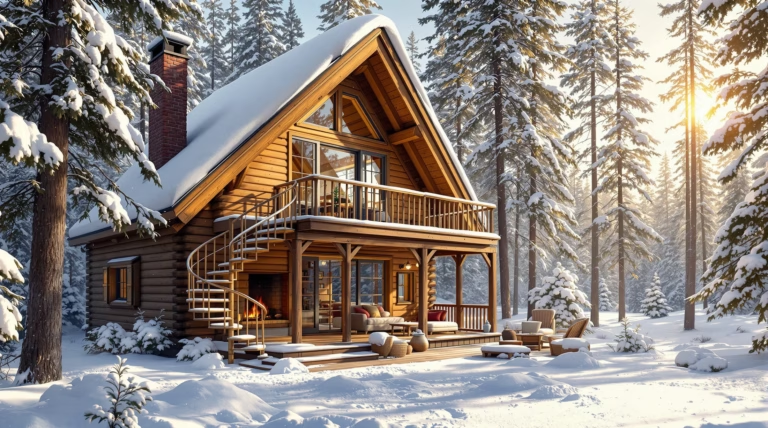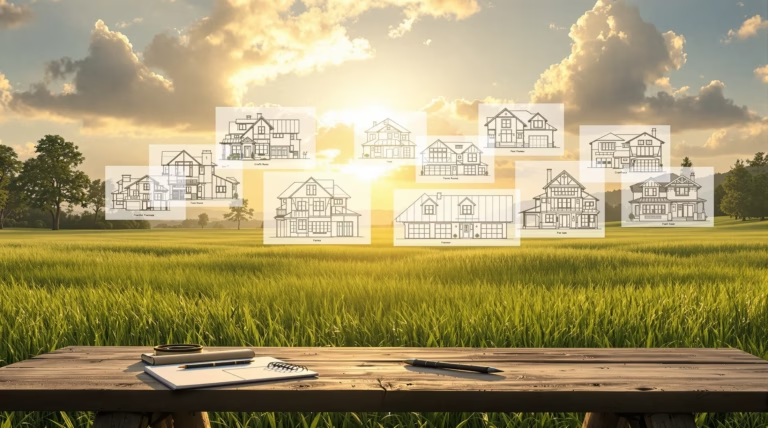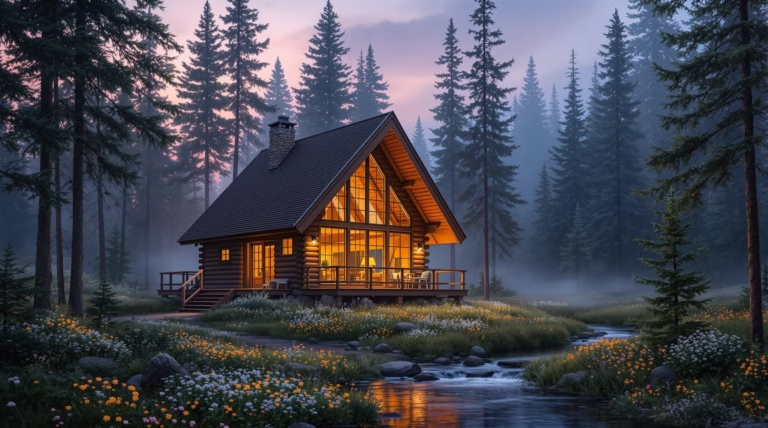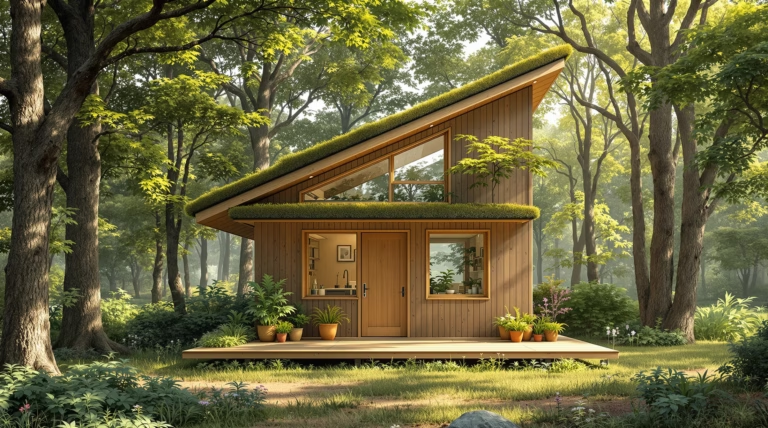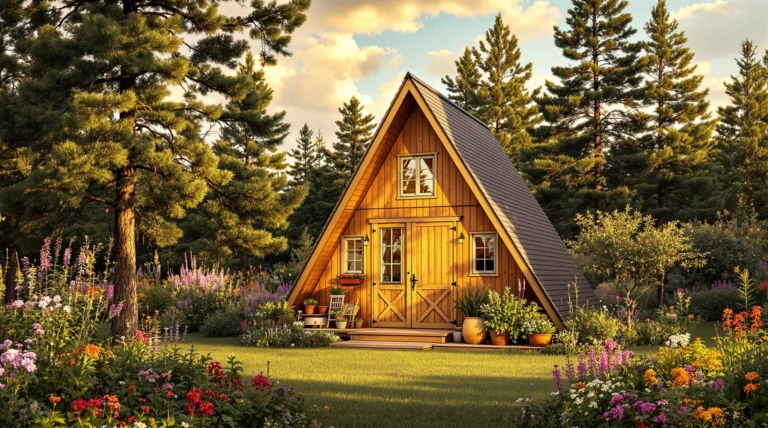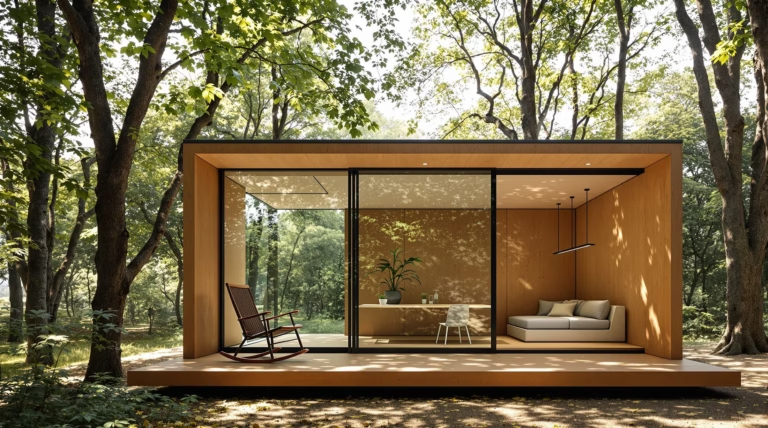Small Hunting Cabin: Your Guide to Building the Perfect Retreat
Dreaming of a private wilderness retreat where you can escape the daily grind and immerse yourself in nature? A small hunting cabin might be exactly what you’re looking for. Let’s explore how these rustic sanctuaries can transform your outdoor experience and provide the perfect basecamp for your hunting adventures.
A small hunting cabin represents more than just a shelter in the wilderness—it’s a personal retreat where outdoor enthusiasts can disconnect from everyday life and reconnect with nature. These rustic structures have gained popularity among hunters, anglers, and outdoor lovers seeking a simple yet functional space to support their outdoor pursuits without the extravagance of larger vacation homes.
These cabins typically range from 100 to 800 square feet, offering just enough space for essential amenities while maintaining the authentic outdoors experience. Whether prefabricated or custom-built, these cabins blend practicality with the timeless appeal of rustic living, providing a basecamp for adventures and a sanctuary to unwind after a day in the field.
What is a Small Hunting Cabin?
A small hunting cabin is a purpose-built structure designed specifically to support hunting activities while providing basic shelter in remote locations. Unlike conventional homes, these cabins emphasize functionality over luxury, typically featuring an open floor plan with just enough space for sleeping, food preparation, and gear storage.
- Compact dimensions optimized for efficiency
- Rustic materials like wood and stone
- Strategic positioning near hunting grounds
- Basic utilities for comfort and functionality
- Weather-resistant construction
Benefits of Owning a Small Hunting Cabin
Owning a small hunting cabin delivers practical advantages that transform the hunting experience. Perhaps the most significant benefit is the convenience of having a dedicated space to store hunting gear, food, clothing, and equipment year-round.
- Permanent storage for hunting gear and equipment
- Elimination of constant packing and unpacking
- Creation of family traditions and memories
- Escape from modern life’s noise and bustle
- Enhanced connection with nature
- Greater self-sufficiency and freedom
Choosing the Right Hunting Cabin Kit
Hunting cabin kits offer an accessible entry point into cabin ownership, providing pre-designed structures that simplify the building process while maintaining the rustic charm hunters desire. These kits range from basic shell packages to comprehensive systems that include virtually everything except the foundation.
Types of Hunting Cabin Kits Available
| Kit Type | Features | Best For |
|---|---|---|
| Log Cabin | Traditional aesthetic, excellent insulation | Year-round use, classic appeal |
| Panelized | Quick assembly, pre-constructed walls | Time-sensitive builds |
| Modular | Minimal on-site assembly, factory-built | Restricted building zones |
| A-frame | Snow-shedding design, efficient use of materials | Heavy snow regions |
Factors to Consider When Selecting a Kit
- Location accessibility and terrain challenges
- Local climate and weather conditions
- Size requirements for your hunting party
- Budget considerations beyond initial purchase
- Assembly complexity and required tools
- Storage capacity and layout efficiency
- Weather resistance ratings
Building Your Own Hunting Cabin
Embarking on a DIY hunting cabin project offers both a rewarding challenge and substantial cost savings compared to pre-built structures. This hands-on approach enables complete customization while fostering a deeper connection to your retreat. The construction timeline typically spans 3-8 weeks for a small cabin, varying based on experience level, available help, and weather conditions.
The financial benefits are significant – while professional construction costs range from $80-150 per square foot, DIY methods can reduce expenses by 40-60%. Before breaking ground, ensure compliance with local building codes, obtain necessary permits, and plan construction outside peak hunting seasons.
Essential Tools and Materials
- Power Tools – miter saw, heavy-duty power drill, circular saw, impact driver
- Hand Tools – hammers, pry bars, measuring tape, levels, framing squares
- Foundation Equipment – shovels, pickaxes, concrete mixing tools
- Building Materials – pressure-treated lumber, kiln-dried lumber, exterior siding
- Roofing Components – metal panels or asphalt shingles, waterproof membrane
- Hardware – galvanized screws, coated nails, structural fasteners
Step-by-Step Guide to Building
- Site Preparation
- Clear vegetation within 5 feet of planned structure
- Level site using string lines and stakes
- Install concrete pier foundation below frost line (36-48 inches deep)
- Floor Construction
- Install pressure-treated 2×8 or 2×10 joists at 16-inch spacing
- Secure ¾-inch tongue-and-groove plywood subflooring
- Wall Assembly
- Pre-assemble wall sections using 2×4 or 2×6 lumber
- Raise and brace walls sequentially
- Roof Installation
- Install ceiling joists and rafters/trusses
- Apply sheathing and waterproof membrane
- Complete with chosen roofing material
- Interior Finishing
- Install insulation and wall coverings
- Set up basic electrical systems if desired
- Add built-in furniture and storage systems
Customizing Your Cabin Design
Personalizing your hunting cabin transforms a basic shelter into a meaningful retreat that perfectly complements your outdoor pursuits. Start by adapting standard cabin plans to include specialized areas that support your hunting activities.
- Specialized Areas – dedicated mud room with gear storage, game processing space with proper drainage, integrated gun cabinets
- Strategic Orientation – maximized solar gain, wind protection, optimal views through planned window placement
- Material Selection – reclaimed local barn wood, regional stone for fireplaces, specific wood species for character
- Custom Features – antler-crafted lighting fixtures, repurposed hunting equipment hardware, built-in trophy displays
- Layout Options – flexible space allocation between gathering areas and sleeping quarters based on group size
Ensuring Energy Efficiency and Sustainability
Creating an energy-efficient hunting cabin reduces both environmental impact and operational costs, particularly crucial for remote locations with limited utility access. Modern hunting cabins incorporate sustainable features that maintain comfort while minimizing resource consumption, often paying for themselves through reduced energy bills in off-grid scenarios.
Energy-Efficient Features to Consider
- Insulation Solutions
- High R-value materials for climate-specific needs
- Spray foam for limited spaces
- Double or triple-pane windows with low-E coatings
- Enhanced floor and ceiling insulation to prevent 30-40% heat loss
- Power Systems
- Monocrystalline solar panels for reliable generation
- EPA-certified wood stoves for efficient heating
- On-demand propane water heaters and appliances
- Smart technology integration for optimized energy use
Sustainable Building Practices
| Feature | Benefits |
|---|---|
| Locally-sourced lumber | Reduced transportation emissions, supports regional economy |
| Low-flow fixtures | 50% reduction in water usage |
| Rainwater harvesting | Supplemental water supply, reduced runoff |
| Composting toilets | Zero water usage, creates soil amendments |
| Passive solar design | Reduced mechanical heating/cooling needs |
Preparing Your Cabin for Winter
Winter preparation is essential for both comfort and structural preservation, particularly when hunting seasons align with colder months. A well-winterized cabin extends your outdoor season while protecting your investment from costly damage. Preparation should begin 4-6 weeks before severe weather arrives, following distinct approaches based on intended winter use.
- Active Winter Use Preparation
- Enhanced insulation systems
- Reliable heat source installation
- Emergency weather preparation
- Seasonal Closure Preparation
- Pipe freeze prevention
- Pest infestation protection
- Snow load and ice dam mitigation
Winterizing Techniques for Hunting Cabins
- Water System Protection
- Drain all water systems completely (pipes, heaters, toilets, sink traps)
- Use compressed air to remove residual water
- Add non-toxic antifreeze to toilet bowls and sink traps
- Interior Preparation
- Remove all food items, including non-perishables
- Unplug all appliances
- Turn off and secure propane tanks
- Exterior Maintenance
- Clear gutters to prevent ice dams
- Inspect roof for damaged shingles
- Trim overhanging branches
- Install storm windows or protective plastic sheeting
- Add roof supports in heavy snowfall areas
- Pest Prevention
- Block small gaps with steel wool
- Install door sweeps
- Secure chimney caps
Document your winterization process with photos and a detailed checklist for future reference.
Maintaining Comfort During Cold Months
For winter-occupied cabins, efficient heating begins with a properly sized wood-burning stove. These units typically heat 400-1,200 square feet and should be centrally positioned for optimal warmth distribution. Plan for approximately one cord of wood per 1,000 square feet of heated space per season. Install properly ventilated propane heaters with carbon monoxide detectors as backup heating sources.
- Insulation Enhancements
- Thick area rugs over bare floors
- Thermal curtains on windows
- Door draft stoppers
- Removable window insulation film
- High-quality cold-weather bedding (thermal blankets, down comforters)
- Emergency Preparedness
- Multiple lighting options
- Shelf-stable food supplies
- Extra warm clothing
- Basic emergency equipment


